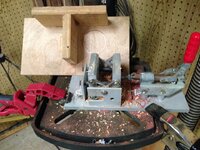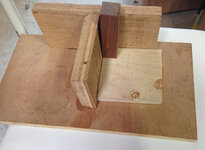Stugots
Member
Good morning all,
I'm not trying to reinvent the wheel just looking for some solid advice on drilling blanks and how some of you all are doing it. Currently I am using my lathe to drill my blanks after chucking them up and I know that its a slow tedious process using the lathe and doing it this way I find that my blank is heating up even though I am going slow. I have a drill press and would love to use it because of the ease that I can lower the bit into the material a little at a time. Is it worth buying a jig to use n my drill press? Also if any of you all have made your own jigs can I get some examples?
Thanks,
Tony
I'm not trying to reinvent the wheel just looking for some solid advice on drilling blanks and how some of you all are doing it. Currently I am using my lathe to drill my blanks after chucking them up and I know that its a slow tedious process using the lathe and doing it this way I find that my blank is heating up even though I am going slow. I have a drill press and would love to use it because of the ease that I can lower the bit into the material a little at a time. Is it worth buying a jig to use n my drill press? Also if any of you all have made your own jigs can I get some examples?
Thanks,
Tony


